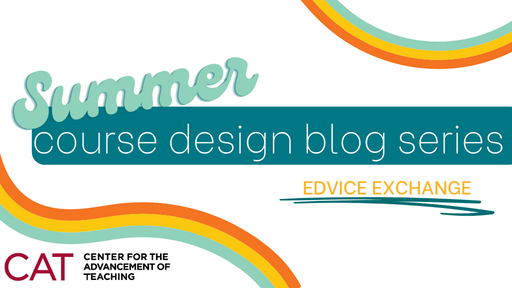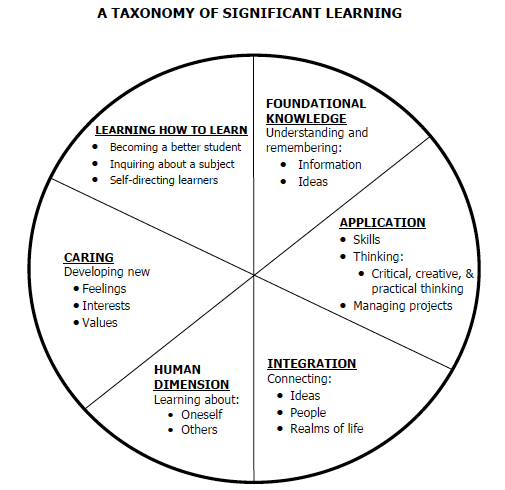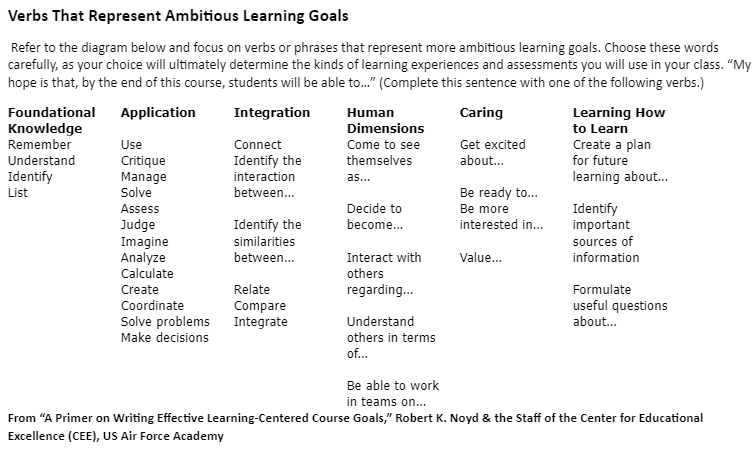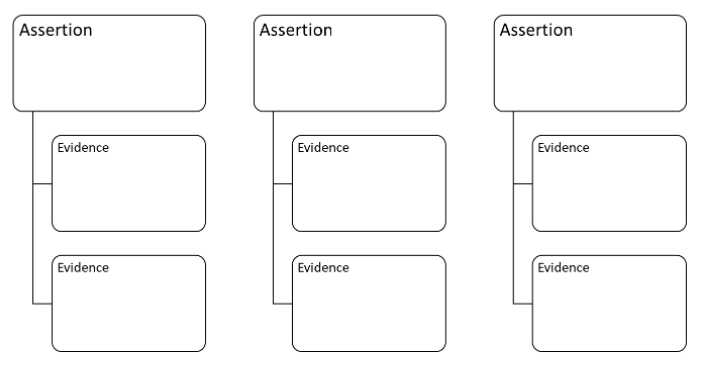Jeff Rients

Along with a set of significant learning goals for your students to achieve and an array of assessments that allow you (and they!) to know they’ve met them, you also need to develop what the students actually are going to do in your course. These learning activities include anything that prepares the students to succeed at the assessments and gain the practice (and feedback) needed to achieve the learning goals.
We often think about learning activities in terms of ‘delivering content’, e.g. lectures, readings, videos, etc. But instead of thinking about these items as the things we the teachers deliver to students, it helps to flip the script and start thinking about what students will do in the course to learn more deeply. This shift in thinking about learning matters–because once you take the emphasis off of you delivering the content and put it on them interacting with it, you are then in a position to ask yourself this key question: what else can the students do (besides consume more content) in order to achieve the goals of the course?
That’s where active learning techniques often come into play. These techniques give students an opportunity to engage with course material directly and authentically while affording them a chance to practice the skills they will need to succeed at your assessments. Some courses come with readymade activities that you may already be using, such as students working on problem sets in a math course, group critiques in an art course, or role-played client interactions in a therapy course. However, a wide variety of active learning techniques exist that will work in nearly any classroom. These techniques are designed to go beyond the flawed idea that students will simply absorb the content like sponges (which we humans aren’t really that good at, cognitively). Rather they put students into the position of interacting with the content, and each other, in order to gain a deeper understanding of course concepts and content.
Here’s a simple active learning technique that we love at the Center for the Advancement of Teaching:
Think-Pair-Share
- Students are given a prompt (a question or problem) relevant to the learning goal and course for the day. Students silently think (and perhaps write) individual responses to the prompt for a minute or two. Then the students pair up for five or ten minutes to compare their responses. Finally, the instructor facilitates a whole class discussion as pairs share their results, such as any insights they discovered or areas where they got stuck. This last phase typically takes between ten and twenty minutes.
Among other things, the Think-Pair-Share helps make space for students who would otherwise be reluctant to speak up in class. The period of individual reflections followed by the comparative discussion with a peer gives them the opportunity to test their own understanding and hone their ideas with peers, helping the students to feel more confident in sharing their own thoughts to the whole class. It also gives students a chance to help them solidify their own understanding by requiring them to articulate it to a classmate.
Many, many other techniques exist for students to wrangle with content in your class. You can get started with this CAT handout, but you might also want to check out Elizabeth F. Barkley’s Student Engagement Techniques (Jossey-Bass 2010) and Discussion as a Way of Teaching by Brookfield and Preskill (Jossey-Bass 2005). Both books cover a variety of classroom learning activities (and we have them available for Temple faculty to borrow at the CAT).
As you plan your learning activities–whether they be classroom activities, homework, readings or whatever else the students need to succeed–it can be useful to plot out the activities using a three-column table, and how they align with the learning goals and assessments. Below is a sample excerpted from a literature class course design, with the readings omitted from the Activities column for brevity.
| Learning Goal | Assessment(s) | Activities |
| Demonstrate the ability to build an evidence-based argument about a text (Application Goal) | Textual annotation, using comments feature on Google DocsTraditional literary explication paper | Social annotation using PerusallReverse engineering a reading: find the evidence cited in the original context, look for contradictory evidence. |
| Relate a work of literature to the context of its composition (Integration Goal) | Knowledge Grid (Barkley & Major, Learning Assessment Techniques, 208-13) | Chalk Talk activity (Brookfield, The Skillful Teacher, 94-5) |
| Value themselves as participants in the joint adventure of world literature. (Caring Goal) | Student-created zine | Write Literary Autobiographies (as per “Autobiographical Reflections” in Barkley, Student Engagement Techniques, 301-4) |
With all of the elements of a sound course redesign – goals, assessments, and learning activities – thus aligned, your course will make sense to your students in a new way. As a result, they’ll be far less likely to assume that any task you ask them to perform is mere busy work. Instead, your students will be able to see that you want them to achieve great things and you are providing the practice and support they need to achieve them.
Don’t miss our last installment in the Summer Course Design Series: Pulling It All Together!
Jeff Rients is an Assistant Director at Temple’s Center for the Advancement of Teaching.










